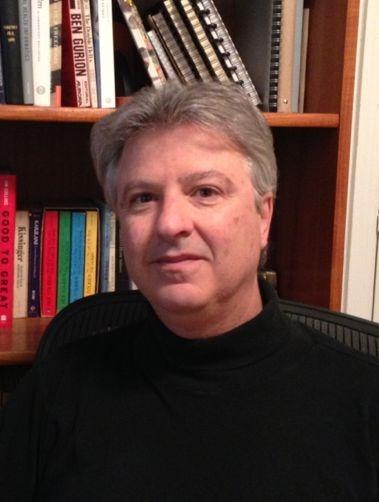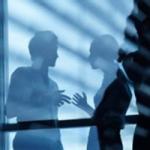
Research Topics
The Section of Molecular Neurobiology (SMN) has been a major contributor of groundbreaking discoveries over the past 20 years regarding the role of the Neuregulin(NRG)-ErbB4 signaling pathway, and their functional interaction with glutamate NMDA receptors expressed in fast-spiking parvalbumin-positive (PV+) GABAergic interneurons, in the developing and adult CNS. We demonstrated that NRG-ErbB4 signaling modulates synaptic plasticity and NMDA receptors at excitatory glutamatergic synapses, neuronal network activity (gamma oscillations) associated with cognitive functions, and the extracellular levels of the neuromodulator dopamine important for motivation, pleasure, movement, reward and cognitive processes. Neurodevelopmental disorders, such as schizophrenia, autism spectrum disorder (ASD) and ADHD, exhibit deficits in cognitive functions as core symptoms. It is therefore significant that genetic variants of NRG1, ERBB4 and NMDA (GRIN) receptors have been associated with risk for schizophrenia, and that subjects with "at risk" alleles exhibit numerous relevant endophenotypes - including low IQ and cognitive deficits.
During the past years, work from our laboratory has uncovered numerous novel and paradigm-shifting functions of NRG/ErbB4 signaling. Initially, we found that not all NRGs are created equal. The secondary structures of different NRG isoforms dictate their targeting to distinct subcellular compartments (axons vs. soma/proximal dendrites) where they participate in either juxtacrine or autocrine/paracrine signaling through ErbB4 receptors. We also demonstrated that the subcellular trafficking of ErbB4 receptors also varies depending on neuronal cell type. Expression of ErbB4 in cortical GABAergic interneurons is confined to the soma and dendrites where it regulates the excitability of PV+ interneurons and the amplitude of gamma oscillations, a type of neuronal network activity that is associated with cognitive processes in the prefrontal cortex. Whereas in dopaminergic neurons, ErbB4 receptors are expressed in axons where they upregulate extracellular dopamine levels by inhibiting the re-uptake transporter DAT. We found that by the converging effects of NRG-ErbB4 signaling on PV+ GABAergic interneurons and dopamine signaling through D4 receptors, this pathway reverses long-term potentiation (LTP) at glutamatergic synapses and augments gamma oscillation power. Our research also identified a novel bidirectional autocrine regulatory loop between NRG2-ErbB4 and glutamatergic NMDAR signaling that is restricted to PV+ GABAergic interneurons expressing ErbB4. It consists of demonstrating that activation of NMDARs on GABAergic interneurons promotes ADAM-10 cleavage and release of somatic NRG2, which in turn activates ErbB4 signaling that promotes the internalization of NMDAR. We hypothesized that this autoregulatory loop can serve to protect PV+ GABAergic interneurons from excito-toxic damage during bouts of high neuronal activity. Lastly, we resolved a long-standing controversy that posited glutamate NMDARs do not contribute to excitatory inputs onto PV+ interneurons in the adult PFC. Resolving this issue is important because NMDARs are target of psychotropic drugs (i.e. angel dust, PCP) and because disruption of NMDAR function causes psychosis and genetic variants are associated with neurological and psychiatric disorders. Using a combination of novel approaches we demonstrated that, whereas glutamatergic synapses onto adult PFC PV+ GABAergic interneurons originating from the ipsilateral cortex have few NMDARs, excitatory thalamic inputs have relatively larger contribution of NMDAR currents.
With the identification of direct targets of the Neuregulin/ErbB pathway in DAergic and GABAergic neurons, our goal is to elucidate the molecular mechanisms responsible for modulating synaptic and microcircuit properties that underlie working memory and other cognitive domains frequently associated with deficits in neurological and psychiatric disorders.
Biography
My formal training as a molecular neuroscientist began at Washington University, where I developed a long-lived fascination for understanding how experience (i.e., activity) and genes interact during neurodevelopment to influence the plastic properties of synapses and neurocircuits. Research at the Section on Molecular Neurobiology (SMN) initially focused on understanding how distinct patterns of motorneuron activity regulate the adaptive properties of skeletal muscles, and we were the first to identify cis- and trans-acting transcriptional elements that regulate slow- or fast-twitch skeletal muscle genes specifically in response to either slow and fast patterns of electrical stimulation. More recently, our group has investigated the activity-dependent functions of the Neuregulin (NRG) family of neurotrophic factors and their receptor ErbB4, both of which have been associated with a risk for schizophrenia. We have made major contributions demonstrating how the NRG-ErbB4 signaling pathway regulates synaptic plasticity, neuronal synchrony (gamma oscillations), dopamine signaling and behaviors in mutant mice that are associated with brain structures and traits affected in schizophrenia, autism and Alzheimer’s disease. More recently we settled a long-standing controversy about the expression and functional role of excitatory NMDA receptors expressed in fast-spiking PV+ GABAergic interneurons in the adult prefrontal cortex, which is important because NMDA receptors modulate synaptic plasticity and are associated with numerous neurological and psychiatric disorders. In 2001 Dr. Buonanno was inducted as a member of the Latin American Academy of Sciences (ACAL).
Selected Publications
- Vullhorst D, Mitchell RM, Keating C, Roychowdhury S, Karavanova I, Tao-Cheng JH, Buonanno A. A negative feedback loop controls NMDA receptor function in cortical interneurons via neuregulin 2/ErbB4 signalling. Nat Commun. 2015;6:7222.
- Ahmad T, Vullhorst D, Chaudhuri R, Guardia CM, Chaudhary N, Karavanova I, Bonifacino JS, Buonanno A. Transcytosis and trans-synaptic retention by postsynaptic ErbB4 underlie axonal accumulation of NRG3. J Cell Biol. 2022;221(7).
- Skirzewski M, Karavanova I, Shamir A, Erben L, Garcia-Olivares J, Shin JH, Vullhorst D, Alvarez VA, Amara SG, Buonanno A. ErbB4 signaling in dopaminergic axonal projections increases extracellular dopamine levels and regulates spatial/working memory behaviors. Mol Psychiatry. 2018;23(11):2227-2237.
- Yan L, Shamir A, Skirzewski M, Leiva-Salcedo E, Kwon OB, Karavanova I, Paredes D, Malkesman O, Bailey KR, Vullhorst D, Crawley JN, Buonanno A. Neuregulin-2 ablation results in dopamine dysregulation and severe behavioral phenotypes relevant to psychiatric disorders. Mol Psychiatry. 2018;23(5):1233-1243.
- Lewis EM, Spence HE, Akella N, Buonanno A. Pathway-specific contribution of parvalbumin interneuron NMDARs to synaptic currents and thalamocortical feedforward inhibition. Mol Psychiatry. 2022;27(12):5124-5134.
Related Scientific Focus Areas




Molecular Biology and Biochemistry
View additional Principal Investigators in Molecular Biology and Biochemistry

Social and Behavioral Sciences
View additional Principal Investigators in Social and Behavioral Sciences
This page was last updated on Wednesday, November 15, 2023